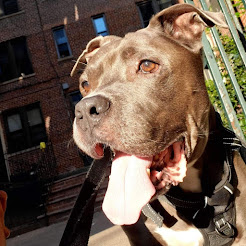The 3-3-3 Rule: Helping Your New Dog Adjust and Thrive
What Does a “Weekender” Do?
Spend your weekends fostering one of the dogs at our Rescue Center.
Pick them up on Friday, drop them off on Sunday, and repeat!
Dog Experience Preferred. No Cats.
-------------------------------------------------------------------------------
The 3-3-3 Rule: Helping Your New Dog Adjust and Thrive
- Feel nervous, timid, or anxious- Hide under furniture or seek out quiet spots- Not have a regular appetite- Test boundaries as they try to understand their new surroundings
- Start to understand who you are and feel more comfortable in the home- Realize that they may be staying for good, leading to them letting their guard down- Begin to show more of their true personality, which may also bring out some behavior issues
- Feel fully comfortable in their new home- Understand their place within the family "pack"- Show their true personality on a daily basis- Begin to develop a deep bond of trust with you- Gain a complete sense of security and settle into a routine
1. Give Everyone Time: Allow both your new dog and any resident pets time to adjust to the changes. This adjustment takes patience and cannot be rushed.
2. Crate and Rotate: For the first few weeks, it’s crucial to keep your new dog and resident pets separated, using a “crate and rotate” method. This means moving your resident pets to another room or crate while your new dog has time out of their crate. It prevents any off-leash interactions that could be stressful or unsafe.
3. Introduce Slowly: After the first week, if your dogs seem to tolerate each other well, you can start introducing them slowly on walks together. Keep a distance at first, and only allow supervised social time if they seem relaxed around each other.
4. Supervision is Key: Even if your dogs appear to get along, always supervise their interactions. This supervision may need to continue for several months or longer, depending on how your pets adapt to each other.
5. Avoid Stressful Situations: It’s best to avoid taking your new dog on long walks, car rides, or outings to pet stores until they have fully adjusted. These activities can be overwhelming and stressful for a dog who is still learning to trust their new environment.
MEET ROOFUS
Roofus is sweeter than sweet, and he's hoping to steal your heart and jumpstart a new chapter in his life. Roofus is 75 pounds of couch potato potential and a whole lot of love to give. He had a great time meeting the other dogs at our adoption event! He's just a good boy looking for a second chance. Apply today to bring Roofus home.
All dogs will be altered, microchipped, and receive age-appropriate vaccines prior to adoption. Please note that the listed location for this dog may not be accurate due to technical limitations of this database and we have transportation options available within 6 hours of NYC (so don't let location hold you back)!
Interested in fostering or adopting? Need more info on this dog? The first step in the process is filling out an application on our website.
Adoption application: www.nycsecondchancerescue.org/general-application/
Foster application: https://www.nycsecondchancerescue.org/dog-foster-application/
Adoption process & fees: www.nycsecondchancerescue.org/process/
For a full list of our available dogs and current adoption promotions, visit:https://nycsecondchancerescue.org/adoptable-dogs/
Not what you were looking for? You can adopt a different pet by using our search feature and adjusting the radius. Thank you for helping our animal shelters and rescue groups with pet adoption.
| Name | Roofus |
|---|---|
| Adoption Fee | $175.00- Dog over 8 |
| Age | 8 years, 8 months |
| Gender | Male |
| Size | Large |
| Shots up to date | Yes |
| OK with kids | Not Sure |
| Housetrained | Not Sure |
| Hypoallergenic | No |
| Spayed / Neutered | Yes |
| OK with dogs | Yes |
| OK with cats | No |
If you have questions about Roofus please contact
NYC Second Chance Rescue
-----------------------------------------------------------------------------------------------------------------------















Comments
Post a Comment